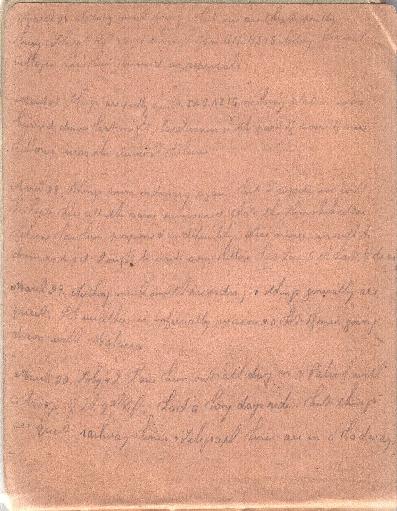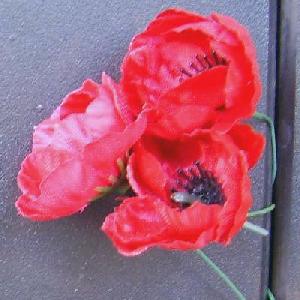Topic: AIF - DMC - Scouts
Brigade Scouts
As to Captain Wearne, the man who trained and led the Brigade Scouts in the earlier part of 1916, he had a good war.
| Religion | Methodist |
| Occupation | Journalist |
| Address | Liverpool, New South Wales |
| Marital status | Married |
| Age at embarkation | 44 |
| Next of kin | Wife, Mrs. Margery Maud Wearne, Athol, Cecil Park, Liverpool, New South Wales |
| Enlistment date | 2 October 1915 |
| Rank on enlistment | Lieutenant |
| Unit name | 6th Light Horse Regiment, 11th Reinforcement |
| AWM Embarkation Roll number | 10/11/3 |
| Embarkation details | Unit embarked from Sydney, New South Wales, on board HMAT SS Hawkes Bay on 23 October 1915 |
| Rank from Nominal Roll | Major |
| Unit from Nominal Roll | 8th Light Horse Regiment |
| Recommendations (Medals and Awards) | Mention in Despatches Awarded, and promulgated, 'London Gazette', fourth Supplement, No. 29763 (22 September 1916); 'Commonwealth Gazette' No. 184 (14 December 1916). Awarded, and promulgated, 'London Gazette', Supplement, No. 29845 (1 December 1916); 'Commonwealth Gazette' No. 62 (19 April 1917) |
| Fate | Returned to Australia 12 November 1917 |
| Medals | Military Cross Source: 'Commonwealth Gazette' No. 103 Date: 29 June 1917 |
| Other details | Medals: Military Cross, 1914-15 Star, British War Medal, Victory Medal |
Extracted from The AIF Project, UNSW@ADFA, 2008
In late March the 8th LHR was selected to provide and lead a long range expedition into the Sinai with the objective of discovering problems and techniques required for such an action. The reason for the 8th LHR’s selection lay with one man, the leader of the Brigade Scouts, Captain Albert Ernest Wearne. He was considered to be the best Scout Officer in the Light Horse and so was a natural choice.
The aim of the expedition was to mount a reconnaissance overland to Wadi um Muksheib where earlier on in the year, the Turks were reported employing work parties to improve the water cisterns in the wadi’s catchment area. In addition they were ordered to inspect the water supply at Moiya Harab and El Hassif. Finally they were to report on their impressions of the land regarding distances and time required for travel, water supplies and other preparations necessary to move a large body of men across arid plains.
Two novelties were to be employed. The first was air support. An aircraft was allocated to fly in advance of the column. The pilot was given specific instructions to report on the countryside ahead of the column with a careful eye out for Turkish troops. This reduced the need for the column to send out advanced guards which then allowed the column greater speed and flexibility. The other novelty was the use of wireless. A radio transmitter was to be carried for the specific purposes of maintaining constant communication with the Anzac Mounted Division at the Canal.
By use of both technologies, it was hoped that mounted men could move rapidly because their need for supplies would be kept to a minimum. Such long-range reconnaissances then would have the ability to strike the Turks hard and disappear before the Turks were able to respond in any effective manner. Since they would have speed on their side, they could make their getaway in relative safety, always knowing the location of any pursuing enemy. If this could be achieved, a long-range raid could sever communication link over the Darb el Maghaza, the new route the Turks were developing, which ran through Bir el Jifjafa. Cutting off this route would restrict any further Turkish advances to the more established Darb el Sultani that followed the coast by way of Katia. The impact on British strategy would be huge, allowing the British to concentrate their defence of Egypt on a confined front.
The raid on Jifjafa was undertaken to fulfil this strategic imperative. Here is Gullett's account.
"Major W. H. Scott was ordered to proceed with a squadron of the 9th Light Horse Regiment (South Australia and Victoria), under Captain Wearne, to capture the position, destroy the well sinking machinery on which the enemy was reported to be working, and observe the country generally. Scott had, after allowing for the horseholders, about ninety rifles available for action, in addition to thirty-two officers and men from the Australian and Royal Engineers and the Army Medical Corps; but, when his column was complete with transport camels and their native Bikanet escort, it included no less than 320 officers and men, 175 horses, and 261 camels."
The raid was most successful and the Turks were confined to attacking from the coast. Wearne's ability on both expeditions was in no small part the reasons for their success. He begins to carry with him a mystique that projects him larger than life, as he would have been by the time Henry Bostock joined the camp at Bally Bunion for a couple day's induction into the scouts. I believe they only stayed there for 5 days, not much time to transfer all the skills. It was just enough time to work out who the new chums were by the time they hit the road and headed towards Hill 70 and Romani.
Further Reading:
Australian Light Horse Order of Battle - Outline
The Australian Light Horse - Structure
Citation: Captain Albert Ernest Wearne






